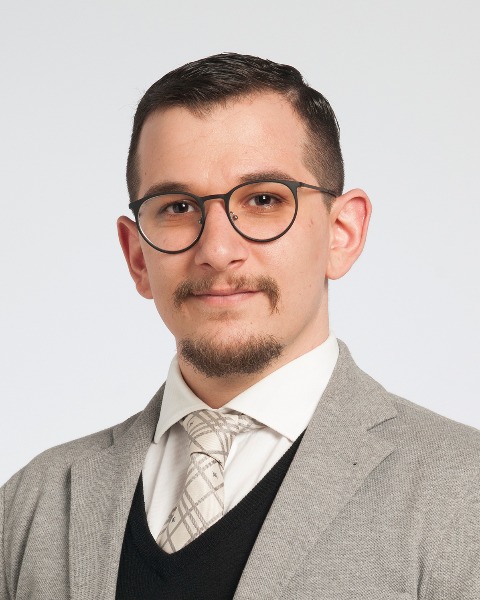Adult Cardiac
Category: Scientific Abstract: Oral/Poster
Evolution in Life-Long Treatment Paradigm for Aortic Valve Disease in Young Adults Over a Half Century
R. Mahboubi1, T. Karamlou2, M. Salim Hammoud3, G. Pettersson4, S. Unai4, E. E.. Roselli4, M. Koprivanac4, H. Najm4, W. Frankel4, J. Witten4, E. H. Blackstone4, L. G. Svensson4
1Division of Pediatric Cardiac Surgery, Heart, Vascular and Thoracic Institute, Cleveland Clinic, Cleveland, Ohio 2The Cleveland Clinic, Cleveland, Ohio 3Division of Pediatric Cardiac Surgery, Heart, Vascular & Thoracic Institute, Cleveland Clinic, Cleveland, OH, Cleveland, Ohio 4Cleveland Clinic, Cleveland, Ohio
1Division of Pediatric Cardiac Surgery, Heart, Vascular and Thoracic Institute, Cleveland Clinic, Cleveland, Ohio 2The Cleveland Clinic, Cleveland, Ohio 3Division of Pediatric Cardiac Surgery, Heart, Vascular & Thoracic Institute, Cleveland Clinic, Cleveland, OH, Cleveland, Ohio 4Cleveland Clinic, Cleveland, Ohio

Rashed Mahboubi, MD (he/him/his)
Division of Pediatric Cardiac Surgery, Heart, Vascular and Thoracic Institute, Cleveland Clinic
Cleveland, Ohio, United States
Presenting Author(s)
Disclosure(s):
Rashed Mahboubi, MD: No financial relationships to disclose
Purpose: Therapeutic options for aortic valve disease are expanding, with ongoing efforts to find ideal, life-time-durable and non-thrombogenic solutions. We leverage the largest single-center experience in aortic valve disease management to characterize our current approach to complex, yet common, scenarios in young adults.
Methods: A total of 8,870 patients 18-50 years old underwent an aortic valve repair (AVr) or replacement (AVR) at our institution between 1970 and 2022. AVR included surgical AVR (SAVR [bioprosthesis/mechanical]), transcatheter AVR (TAVR [including valve-in-valve]), Bentall (concomitant aortic root replacement), David (valve-sparing concomitant aortic root replacement), Allograft (donor), Ross (pulmonary autograft), and Ozaki (autologous pericardium neocuspidization) procedures. AVr include leaflet and/or commissural work and/or anular stabilization. Prospectively maintained center-based registries provided volume and time-related outcomes. Using patient vignettes, we describe our evolving institutional experience, share our learning curve from the inception of a procedure (Figure), highlighting the rationale guiding diagnostic and technical approach modifications. To contextualize our perspective, we provide a comparison to published data. In the absence of long-term data to guide optimum strategies among the ever-increasing armamentarium in this population, we define an institutional strategy that leverages innovation and advanced imaging modalities to individualize therapy.
Results: Our general institutional philosophy emphasizes native valve preservation through AVr and reconstruction whenever possible. When assessing for AVr, we employ detailed 3D-assessments of aortic root, annulus, and leaflets using high-resolution gated-CT complimented by 3D-echocardiography, providing detailed insights into the mechanisms of dysfunction and facilitating a personalized valve-preservation blueprint to maximize native valve durability and lifespan. Introduced in 1963, SAVR remains the gold standard for AVR, although TAVR prevalence in high-risk young adults continues to increase since its adoption in 2006. Ross and Ozaki similarly increased in prevalence, with Ozaki increasingly preferred for primary AVR with aortic roots < 4cm, avoiding double-valve disease and preserving future options for aortic valve reintervention. AVR mortality remain below expected STS rates. Observed:Expected ratios for SAVR and TAVR are 0.2 and 0.6 respectively, with 93% unadjusted-overall 1year-survival. Similarly, morbidity and mortality associated with reoperative AVR has declined and now approximates rates associated with primary isolated-SAVR. In practice, procedure and prosthesis choice, including instances where aortic root enlargement/replacement may be advantageous or necessary, is made through a shared decision between patient, cardiologist, and cardiac surgeon, tailored to the patient’s anatomy and desires, in the context of lifelong management strategies, rather than avoidance of reoperation.
Conclusion: Our decades of experience have given rise to an evolution in our management strategy for young adults with aortic valve disease as our armamentarium has expanded. We have leveraged iterative technical modifications coupled with advanced imaging assessments in a multi-disciplinary shared-decision model. Our framework allows us to provide an individualized-strategy, matching disease to therapy in the context of lifelong management and proposes possible solutions to complex, yet common scenarios, reproducible in other cardiac centers.
Identify the source of the funding for this research project: N/A
